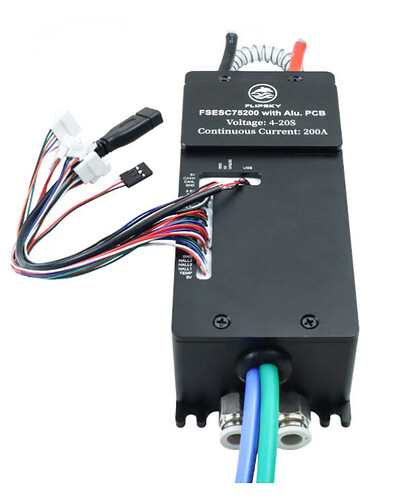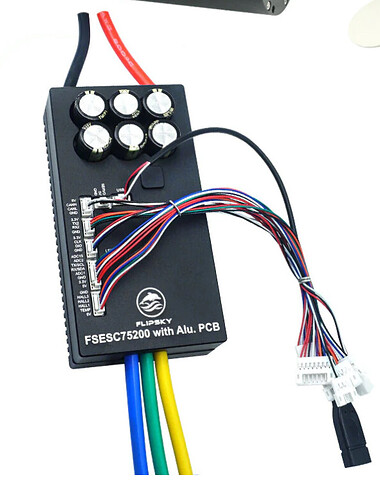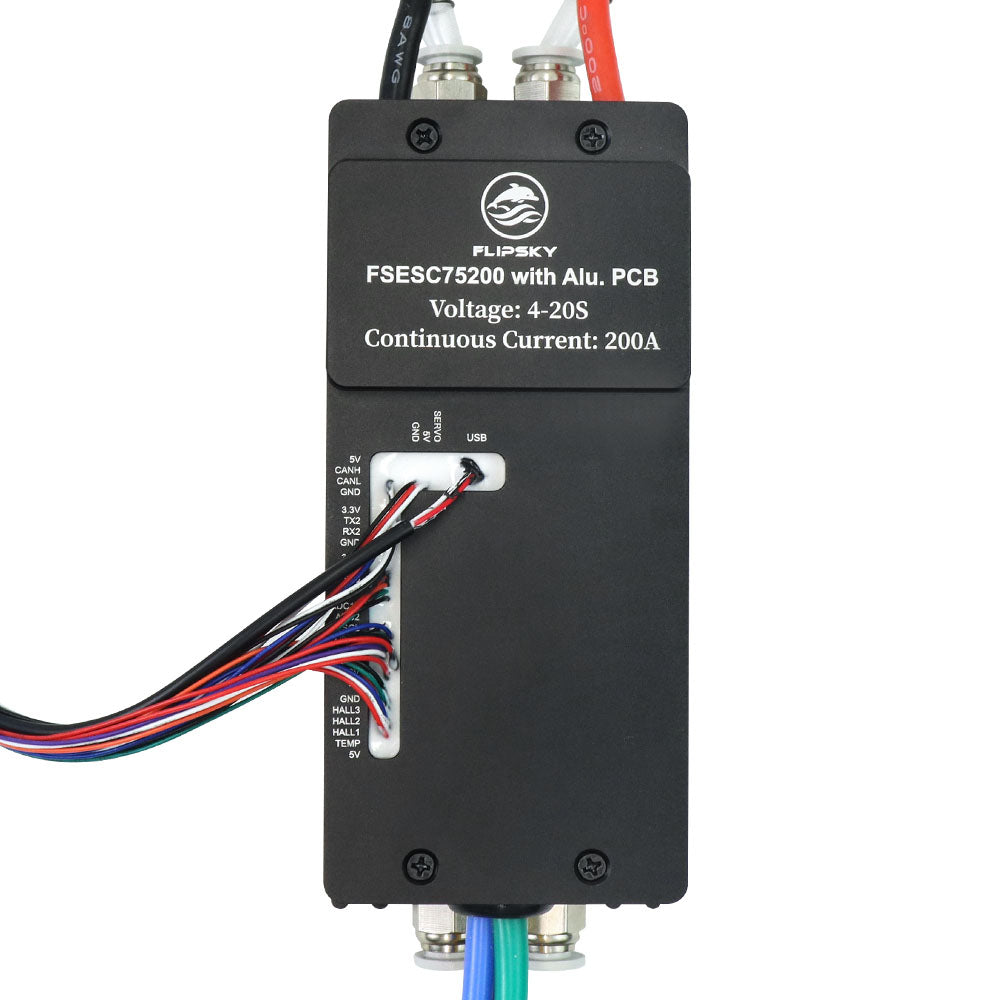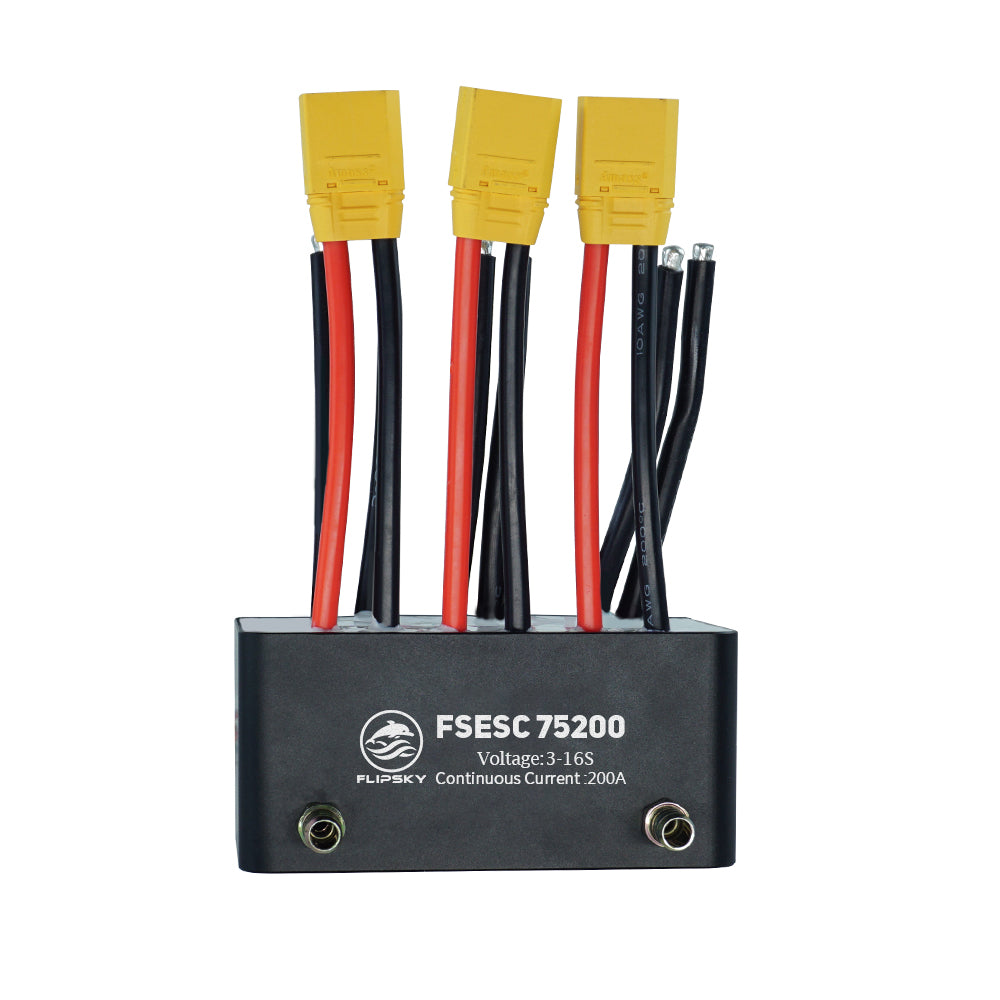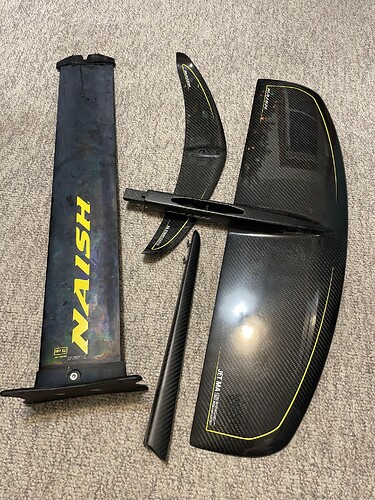I think water cooled VESC looks different than air cooled. There is no radiator. IMHO waterproofing is a poor conductor of heat.
I was surprised myself when I read about this. But if this well-known site advised so, then I did as they advised.
This is a Watercooled VESC
This is the same VESC that isn’t watercooled.
The watercooled version has a thick aluminum base that allows water flow through it that helps dissipate the heat buildup in the vesc. The thick metal base also does the same thing to a lesser degree without water flowing through it.
The watercooled version also has potting material to aid in making the device more water”resistant” from small amounts of water that can accidentally happen. It is NOT waterproof!
There isn’t any “radiator” unless you devise one.
Each vesc or ESC has a heat range it’s designed for. The heat buildup happens when you run power through the device. With foiling the power flow is higher during the initial get up foiling phase or you are running at constant high power demand. If the heat buildup temp goes above the capability of the device it either fails completely or shuts itself off to prevent the destruction. In either case the rider finds themselves stranded with no power to the motor.
Some setups and rider technique don’t need any additional cooling effort but that’s rare. Typically the designer implements some additional heat dissipation method.
Keep reading as there are lots of build “cooling” examples here.
You also seem to be buying things without a good understanding of what you’re reading. Your latest example is you claim that you read advice here to get a heavy battery. I don’t believe that you read that here or likely on any forum so you are mistaken on that point.
I wonder @Pavel, maybe you read here somewhere that a beginner needs more battery capacity than an experienced efficient rider. The idea being that frequent falls and starts will use up the battery much faster than being up on the foil. So one might select a larger (heavier) battery for a beginner. The added weight isn’t a benefit though, just a price to pay for more run time. This is a diminishing return though, an efoil is already an upside down pendulum and added weight will make it harder to balance.
It seems I made a fatal mistake. But there is no going back, I can’t return the battery to the seller. It’s too bad there’s no list of recommended components.
Here’s my updated list, with prices. Starting components for beginners:
-
Motor - Flipsky 65161 120KV, Round shaft with thread - $200.00 + $30 shipping local.
-
VESC - Flipsky 75200 - >$90 from China or >$160 local
-
Remote - Flipsky VX3 - $73 local
-
Propeller - Fliteboard Propeller, $25 + $10 shipping local
-
Batteries - unknown
-
Foils - unknown
-
Boards - unknown
Perhaps this will be useful to other newbies who read my thread.
When I have a better understanding of batteries, foils and boards, I will add to my list.
Regarding battery packs, there’s a nice thread and a few linked YouTube videos by @ludwig_bre
https://foil.zone/t/efoil-battery-build-video-tutorial/18891
Your 16S11P could be modified. But cutting a pack open is something that requires caution and the sort of thing where you take deliberate safety steps to avoid accidentally shorting cells.
16s11p is ok for a battery. Just use it as is dont bother modifying it. You will need the capacity when learning, once you ride efficiently you can upgrad to a smaller battery and use the bigger one for Touring. I use 16s14p with no problem.
Would you have a link for those 4 first prices ?
A bit dramatic but given you are mixing electricity, water and the human body there is risk of injury or worse if you don’t put this all together properly.
I have a suggestion.
Go to an efoil dealer (many provide demos
or even instruction) or find someone who will let you try their rig.
This will let you determine if this activity is really something you will enjoy and also see what a complete rig looks like.
Not to sound harsh but I have the feeling that you don’t have the DIY mindset or skill required to get a rig put together.
- Flipsky 120 KV eFoil Motor | eBay
- Amazon.com : FLIPSKY 75200 FOC 84V High Current Single ESC with Aluminum PCB for Electric Skateboard/Scooter/Ebike Speed Controller : Sports & Outdoors
- Amazon.com: Flipsky Fully Waterproof Remote VX3 Controller for Efoil | Esurf | ESK8 with Wireless Magnetic Charging : Electronics - don’t forget to apply 5% coupon.
- Fliteboard Propeller– Electric Surf Co apply coupon for discount $10: WELCOME10
The batteries also cost me $300 along with a built-in BMS. The seller discounted it by $100 when he knew I needed it for a DIY project and added a charger for free.
The first time everything goes wrong. But I will try and learn from mistakes.
Thanks for the advice. I won’t redo the battery yet. I’ll try the simplest and laziest way. And perhaps in the future I will do something else with this battery.
Interesting! Thank you.
Thanks a lot! It turns out that some water-cooled VESCs have a heatsink. I thought they were waterproof because they had that word in their marketing name.
What is the difference between these two?
Why is the first one cheaper, although it has a higher voltage?
Why doesn’t the second one has thin wires?
Bought a VESC - Flipsky 75200 84V with Water Cooling Enclosure for $144 from Amazon (-$16.00 coupon)
And a remote for $73
I bought a Naish setup with a 1600 foil and a 75 cm aluminum mast for cheap.
The previous owner was unable to remove seized bolts holding the mast to the mast base and sold it as defective. I tried to unscrew them and broke my Torx bit. They are completely stuck.
Soak in corrosion x for 24 hrs. Then soak in boiling water for about 10 minutes, and then try to remove them.
There is probably no need to remove the plate. In pictures on the internet I see that this plate is always attached to the mast. I think it is glued and not removable.
may need to remove the plate to pass motor wires. also try what Jezza mentioned but use an inpact drill with torx bit
